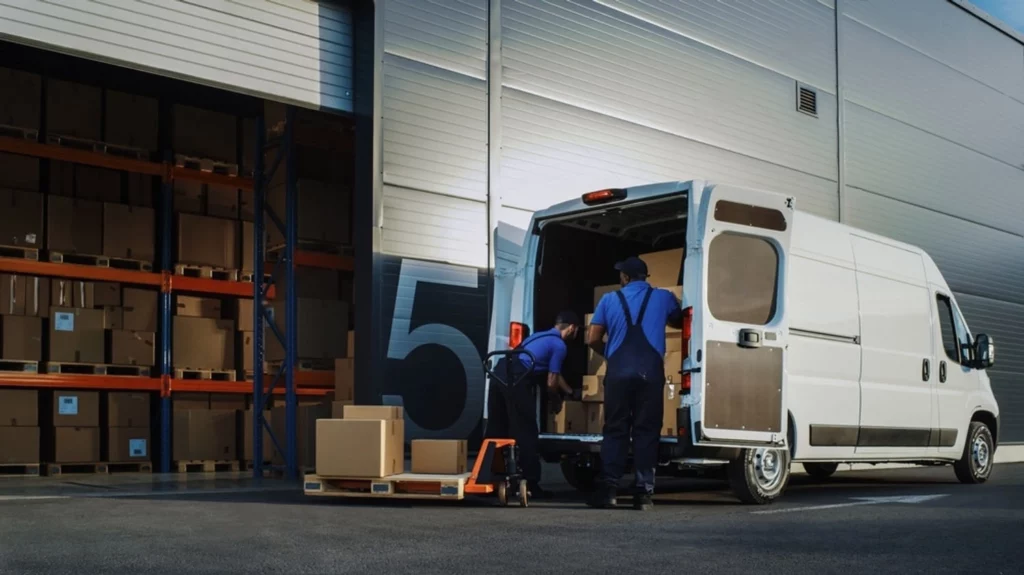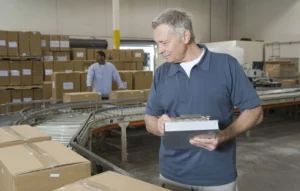Due to recent advancements in technology and shifting consumer preferences, the last-mile logistics sector has undergone significant changes. These changes have led to several trends in last-mile logistics that have impacted the industry in various ways.
Here are the top trends in last-mile logistics that businesses need to be aware of:
Same-Day Delivery
Same-day delivery has become increasingly popular in recent years, especially with the rise of e-commerce. Consumers now expect to receive their purchases quickly and efficiently, and businesses now view same-day delivery as a competitive advantage.
Companies are investing in cutting-edge technology and creative delivery strategies like drones, self-driving cars, and delivery robots to meet this demand.
Faster Fulfillment with Advancements in Technology
Because of technological advancements, the last mile logistics industry has become faster. Companies can deliver packages faster than ever before thanks to new innovations such as autonomous vehicles and drones.
Furthermore, businesses are investing in smart technology to track deliveries, giving them greater visibility and control over the last mile.
Delivery Options
Customers want more control over their deliveries, and businesses are responding by providing a variety of delivery options.
Customers can now choose when and where their packages are delivered, with options such as evening and weekend delivery, locker pickups, and even in-home delivery.
This trend has also given rise to the concept of crowdsourced delivery, in which anyone can sign up to deliver packages on a company’s behalf.
Supply Chain Disruptors Impacting the Last Mile
Supply chain disruptors such as natural disasters and global pandemics have had an impact on the last-mile logistics industry.
Companies have had to adapt and find new solutions as a result of these events, such as using alternative delivery methods and focusing on sustainability.
Shippers Turn to Smart Tech for Tracking
Shippers are increasingly reliant on smart technology to track their deliveries. This technology enables real-time delivery tracking and monitoring and offers greater visibility and control over the last mile.
Furthermore, smart technology can be used to optimize delivery routes, increase efficiency, and lower costs.
Analytics Will Drive Last Mile Logistics Costs Down
In the last-mile logistics industry, data analytics is expected to drive down costs and improve efficiency.
Companies can make data-driven decisions that reduce costs, improve delivery times, and increase customer satisfaction by analyzing data on delivery routes, traffic patterns, and consumer behavior.
On-Demand Delivery
On-demand delivery has grown in popularity, particularly in urban areas where customers expect instant gratification.
This trend has resulted in the development of on-demand delivery services, in which businesses can deliver packages within hours, if not minutes, of receiving an order.
Crowdsourced delivery often facilitates these services, where individuals can sign up to deliver packages in their spare time.
Autonomous Vehicles and Trucks (AVs and AT)
AVs and ATs, or autonomous vehicles and trucks, are becoming increasingly important in last-mile logistics.
These vehicles can deliver packages more quickly and efficiently than traditional vehicles, while also lowering costs and improving sustainability.
Contactless Delivery
The COVID-19 pandemic has accelerated the trend toward contactless delivery, which involves delivering packages without making physical contact between the delivery person and the recipient.
This trend has resulted in the development of new delivery methods, such as unmanned vehicles and drones, as well as the use of smart locks and remote-opening delivery boxes.
Drivers Become Merchants
Finally, drivers are now taking on the role of merchants, with the rise of gig economy platforms allowing individuals to deliver packages in their spare time.
This trend has led to the development of crowdsourced delivery, where anyone can sign up to deliver packages on behalf of a company.
By leveraging crowdsourced delivery, businesses can improve their delivery capabilities, reduce costs, and reach new markets. Additionally, the rise of gig economy platforms can provide individuals with new income opportunities, which is especially important in a rapidly changing job market.
Conclusion
In conclusion, the last-mile logistics industry is evolving rapidly due to technological advancements and changing consumer preferences.
By staying up to date with these trends and investing in innovative delivery methods, businesses can improve their efficiency, reduce costs, and enhance the customer experience.
Additionally, businesses must be agile and responsive to changes in the supply chain to remain competitive in the fast-paced world of last-mile logistics.







